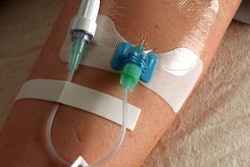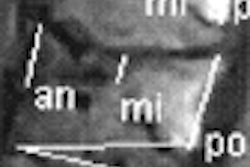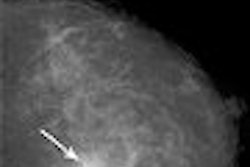With the number of implanted pacemakers growing by the minute, too many patients who need an MRI can't be scanned with the modality.
Or can they? In a study presented at the 2006 RSNA meeting in Chicago earlier this month, researchers from the University of Bonn in Germany put scores of pacemakers to the test on a 3-tesla scanner, and found no significant heating or degradation of function.
Some 35 million MRI scans are performed each year on more than 17,000 installed scanners, said lead investigator Dr. Claas Naehle. In the U.S. alone, about 2.4 million patients have pacemakers installed, and 80,000 more are implanted each year, he said.
"A recent study showed that 17% of patients with pacemakers require an MRI scan within a month of implantation, a diagnostic procedure that is currently denied them," he said. "MR is the most important imaging modality for the central nervous system, especially the brain, and there is no other modality with acceptable resolution and high diagnostic accuracy."
Naehle, along with his co-investigators Drs. Alexandra Schmiedel, Katharina Strach, Carsten Meyer, Hans Schild, and Torsten Sommer, sought to evaluate the safety and feasibility of MR imaging of the brain at 3 tesla in vitro and in vivo -- i.e., with pacemakers placed directly inside coils and also in 27 patients with implanted cardiac pacemakers.
The test without patients exposed 10 pacemakers and 45 leads to 3-tesla MRI with continuous registration of pacemaker output at the pacemaker lead tip during MR imaging at a specific absorption rate (SAR) of 3.9 W/kg, "at the highest resolution of 8 tesla per square meter," he said. Temperatures were measured "pre-, during, and post-MRI," Naehle said.
In the other arm of the study, 27 patients with cardiac pacemakers and clear indications for MRI underwent 3-tesla MRI of the brain with continuous ECG and pulse oximetry monitoring.
A transmit/receive head coil was used to minimize radiofrequency exposure to the pacemakers, while ensuring good signal to the brain. "Second, we wanted to avoid competitive rhythm or bradycardia, depending on the intrinsic heart rate" he said.
Radiofrequency exposure was limited to a SAR of 1.5 W/kg. The team measured the technical status including battery voltage and lead impedance, as well as the functional status (pacing capture thresholds [PCT]) of the pacemakers before and immediately after imaging, Naehle said. The pacemakers were preprogrammed before and after MRI.
The sensing function of the pacemakers was deactivated for the exams, the researchers explained in their abstract. Follow-up pacemaker evaluations were performed (including lead heating and pacing threshold) three months after the initial scan to assess any long-term damage to the devices.
The pacemaker exposure test revealed a maximum temperature increase at a SAR of 3.9 Watts/kg of 0.3° C using a transmit/receive head coil "during 210 minutes of field exposure," Naehle said. The pacemakers were also unaffected by the exams.
In the patient study, the researchers found no significant changes in the pacemakers' technical (battery voltage 2.78 ± 0.006 versus 2.78 ± 0.007 versus 2.77 ± 0.006 bolt, lead impedance 692 ± 205 versus 682 ± 192 versus 684 ± 197 Ohm) or functional status (no changes in PCT ≥ 1.0 volts). And MRI had no effect on the pacemakers' programmed data or the feasibility of interrogating, programming, or telemetry using the devices.
Finally, serum troponin I, measured before and 12 hours after the scan to detect any thermal myocardial injury, found no significant changes (0 ± 0.0 versus 0 ± 0.0 ng/mL).
"The maximum temperature increased measured 0.3° C in vitro, and in the study of 27 patients, no patient reported any symptoms of dizziness or heating sensation," Naehle said. "No impairment of image quality was noted. Pre-MRI and post-MRI measurements showed no differences in pacing parameters."
"MRI imaging of the brain can be safely performed without compromising image quality," he concluded. But "safety comes first," he said, requiring special precautions to ensure that the pacemaker and the particular imaging application are safe for the patient.
By Eric Barnes
AuntMinnie.com staff writer
December 15, 2006
Related Reading
Cardiac CTA a no-go zone for some, July 1, 2006
New MRI scanners, applications lead to regulatory upgrades, May 15, 2006
ECRI's report on MRI safety, March 28, 2006
Doubling down: Raising the stakes of MRI patient safety, March 9, 2006
Ten questions patients should ask their MRI provider: Is this real or is it hype? February 15, 2006
Copyright © 2006 AuntMinnie.com



















